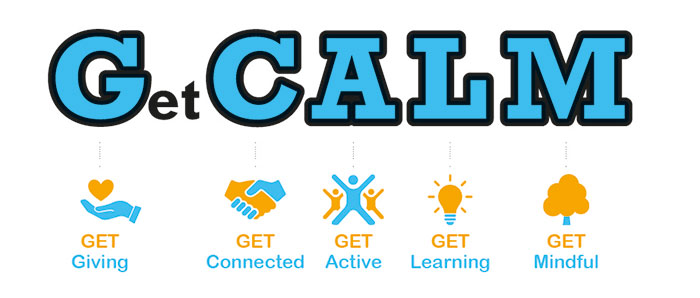We are all aware that 3 lockdowns have had a massive impact on our mental health & emotional well-being - especially amongst children. But have you wondered why lockdowns are so damaging to our general mental health?
Mental health is a complex issue with many serious illnesses requiring 1 to 1 intervention and treatment. But, in terms of our general mental well-being, the evidence-based 5 Ways to Wellbeing presents a useful framework of 5 keys to maintaining positive mental health. It’s been the foundational framework for Public Health England since the NEF released their scientific papers in 2008 and 2011*. And it’s a framework that works well for adults and children, schools and workplaces. See
this NHS website for more information.
During lockdowns, most of these keys have been removed or limited, which is why we are seeing such an increase in mental health issues. The great news is - by making efforts to put these back into our lives (albeit in different ways than we would usually), we can start to improve our general mental wellbeing daily.
So what are these 5 Ways to Wellbeing?
1. Giving – being kind to ourselves and others. This has been hard with much of our ‘me’ time activities closed (gyms, hairdressers, shops, indoor leisure activities etc). However, looking out for others and helping them is also an important element of this key and this is something we can do, especially during lockdowns, which can be so difficult for the elderly and vulnerable.
2. Connecting with others – we have all had to make big efforts to connect with friends and family in new ways, over the phone, via online meetings or zoom ‘meet ups’ but nothing beats face to face interaction and a hug.
3. Getting Active – it has been great that the government has allowed outdoor exercise, recognizing its importance on physical and mental health. Online workouts have also helped where gyms and group exercise classes have had to shut.
4. Learning new things – with schools, colleges and adult learning courses all shut, we have had to be inventive and go for remote learning options, which is great but also requires extra motivation to keep it going!
5. Being Mindful – aka taking notice of our surroundings and being in the moment. With a much slower paced life, getting out for walks and being intentional with the people we are with can help us add this element into our lives for better general mental wellbeing.

So, despite lockdowns removing most of our usual ways to mental wellbeing (which, for the most part, we would have done without even realising), we can still incorporate these 5 keys, we will just have to make a bit more effort.
At
A-life they are passionate about making sure children from a young age (and their teachers & parents) understand & can apply these 5 keys to their own lives & really thrive. They have designed online & in-school workshops that bring to life these 5 Ways to Wellbeing, using the acronym
GetCALM to help children remember them. There workshops are hands- on and interactive, delivering the information in an age-appropriate & super engaging way that reaches children where they are, grabs their attention & sinks deep into their being. (
Visit A-life for more information on our workshops).
Just like the ‘five a day’ message for fruit and veg has helped us remember to eat the varied nutrients that are good for developing a healthy body, the 5 Ways to Wellbeing also release in our bodies the nutrients that are good for developing a healthy brain. More on this to follow in our next blog...
Much of the equipment and playground designs here at
Playforce can also reinforce the 5 Ways to Wellbeing:
Giving – Creating outdoor spaces for children to explore and be kind. Zoning different areas to appeal to different children’s needs. Using different
surfacing,
benching or
posts or walkways to create areas for children to socialise and play, encouraging children to be kind.
Connecting – Adding quiet outdoor spaces with seating will aid children to sit and talk or play with friends. Our
Buddy Bus Stop Double Bench could be a great addition to encourage conversation.
Learning – We can help you choose school playground equipment to simply create opportunities for active play for example, but outdoor spaces can also be used to support the needs of the curriculum. Have you thought about
outdoor Maths or
outdoor Science lessons?
We recently talked to a number of school teachers about the impact that COVID-19 has had on their children in terms of fitness, wellbeing and learning, specifically looking at the role of outdoor play and learning. To download the full report and read our discussions and analysis,
click here.
Together we are helping children to GetCALM!